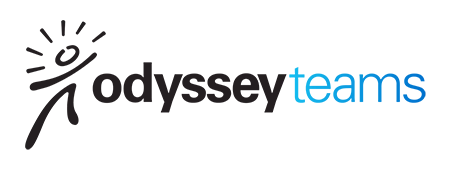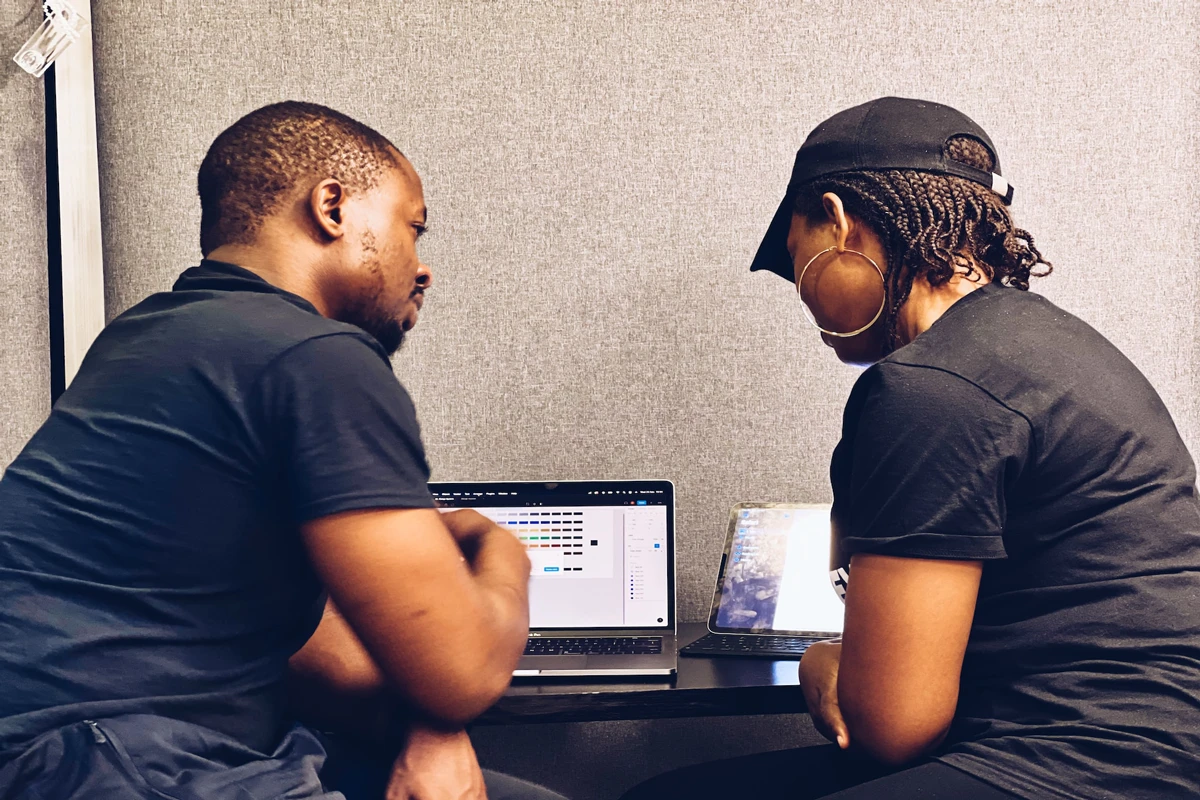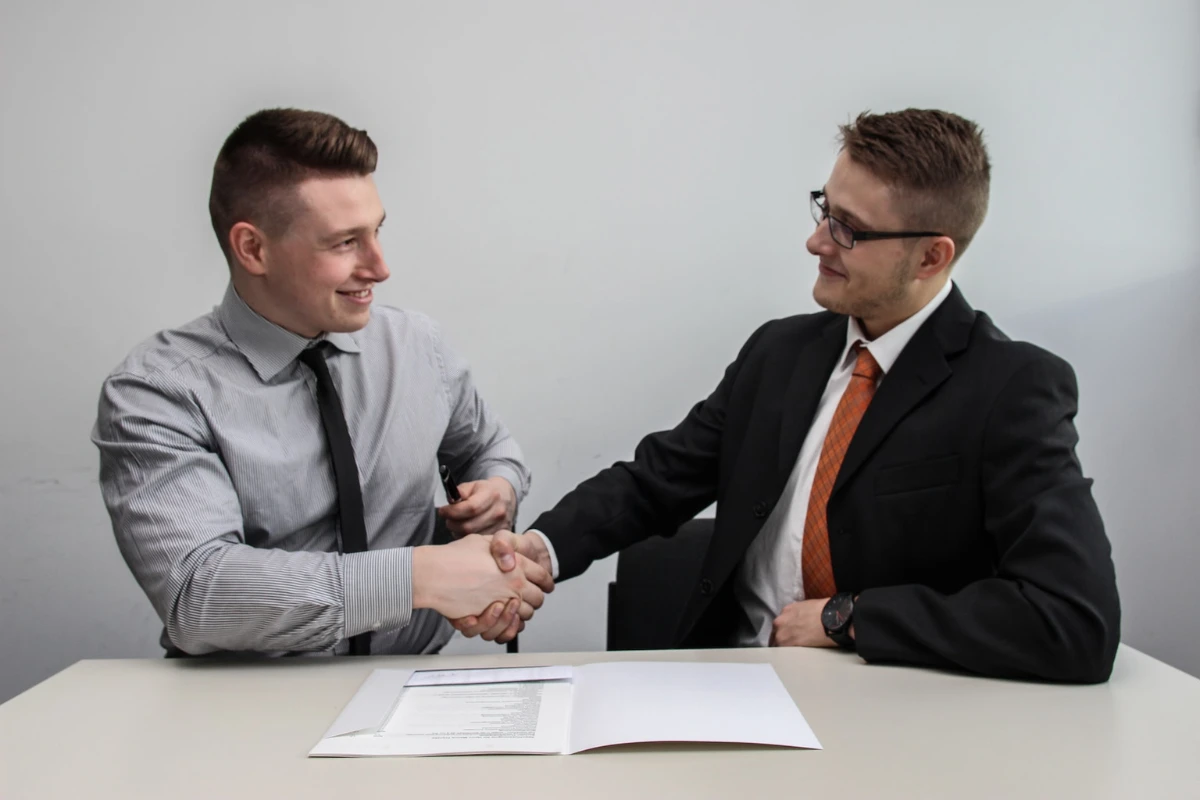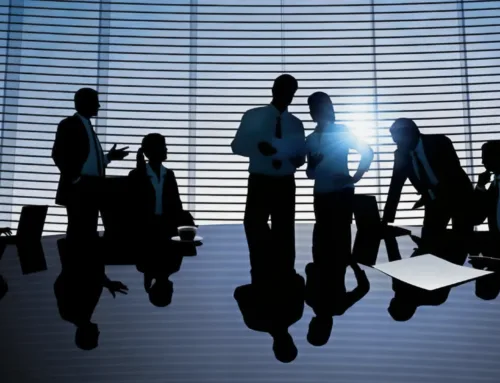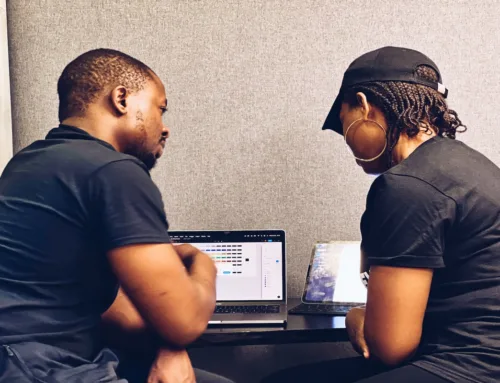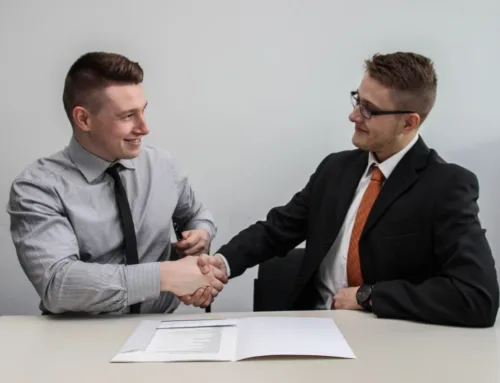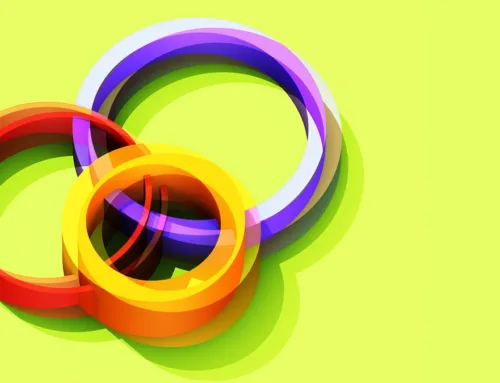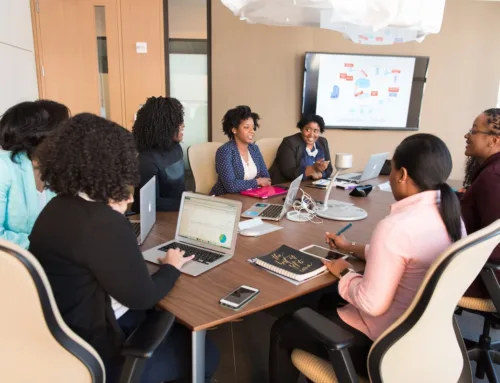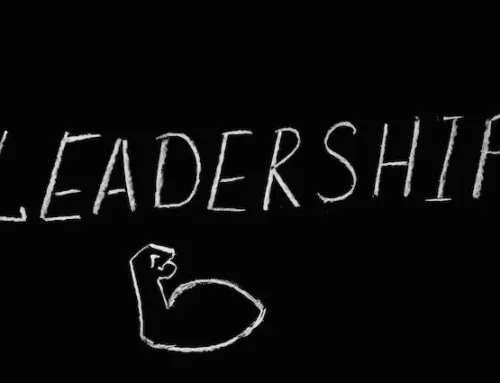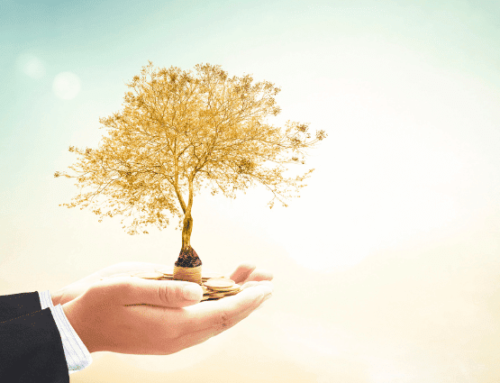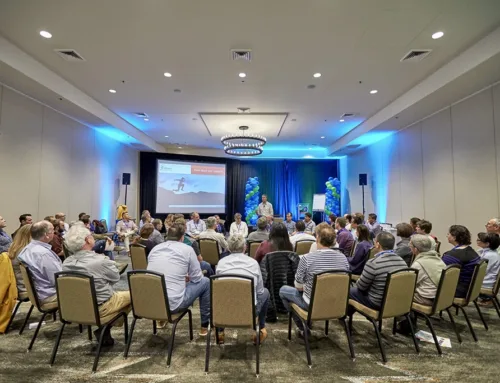By the Spring of 2000, I was losing my passion for the experiential medium that was tremendously successful for the previous decade. Ropes Courses started became synonymous with “teambuilding” and “teambuilding” was losing its value through poor facilitators, knock-offs and companies who were seeking it just to check the box. Ropes courses were a dime a dozen and it became more ubiquitous as a challenge course and thrown into the same category as paintball, a scavenger hunt or karaoke – where strong facilitation, or the metaphoric value were not required by industry standards or a deceived public. It was sad to watch the original brand and intent of true team development slip out of control. Odyssey Teams was still doing it’s work effectively but we were being shopped by companies looking to just check the ‘teambuilding’ box – not looking for the true development of their team. We held the belief in our value and charged for that value and let the box checkers go to knock-off competitors with the knowledge that they would further dilute the brand of our medium.
I looked back to the good old days – where no one had ever heard of a “ropes course”, or even “team building” – when neither label existed and we used the activities to talk powerfully about leadership, teamwork and business. I was entering this ‘funk’ more frequently by the Spring of 2000 that my colleagues would have to endure my lust for doing something different. I talked of a new career altogether. I explored the ideas of being a fireman, even medical school, something where I could still feel like I was helping people. There were countless Odyssey meetings where my team would have to endure my funk and my non-stop push for value – not to succumb to chasing price down as our industry slipped further into the diluted “teambuilding” craze.
One day in the Spring of 2000, we got a call from Lucent Technologies who had heard of our work in building teams. They had brought a new leader to run their global procurement division – a big job. Jose Mejia was holding his first meeting for all his new direct reports from around the world. Lain took the call and listened to the challenges and objectives that Jose faced. Lain came to me with an idea of giving them a different experience and riffed for awhile on building something. He said “how about building dog houses”. I smirked, not knowing where he might go or how to leverage it as a training experience, a simulation, or a metaphor. Well, Lain sold the idea to the client before he really sold it to me. Nice one, Lain. ;-). He went about his logistical, metaphoric and optimistic ways and I half-heartedly went along with it. The question that was still unanswered was: “what are we going to do with all these dog houses when they are finished?”
The event took place in Orlando, Florida for 250 participants. We decided to break them into teams of ten, give them a bunch of lumber, plywood, hammers, nails, saws, paint, brushes and two hours to see what they would come up with. Prior to the two hours of building, we spent two hours setting the context and giving them experiences and discussions to get them prepared to WORK. That is, to sharpen their creativity, leverage the strengths and diversity of the team; manage time, resources and energy, and be more deliberate about processes, relationships and results.
Well, we must have nailed these elements because what everyone in the room saw was utterly amazing. On time, 25 of the most creative, fantastic dog-houses were built. Some on stilts, some with drawbridges, Tahitian dog-huts, modern architecture, Victorian. At the conclusion, we all paraded down the ‘streets’ of this dog-house neighborhood in complete awe of what was accomplished. Lain made prizes for ‘best teamwork’, ‘best creativity’, and I think one was even for ‘best engineering’ (since most of the group were engineers). As with ALL Odyssey programs, the experience itself was not our aim. The discussion or debrief was. It is there we have the chance to attach words – powerful words and behaviors to galvanize the experience. The words and experience are thus connected with who they are, what they do and where they are going – individually and organizationally.
Jose announced that the houses were going to an auction sponsored by Lucent Technologies and that the proceeds were going to be given to the local (Orlando) Habitat for Humanity. A win for people, a win for dogs, and a huge WIN for Jose and his new team. At dinner, Jose and I talked about the event. He knew, that as he went around the world, meeting his other teams and leaders, that THIS was exactly the medium which would point towards what he wanted his people to value. His next big meeting was to be in Atlantic City in October, 2000.
Ever creative, Lain suggested an idea to build on the ‘building’ idea – bicycles – for Jose’s next meeting. Again, I was half-sold on the metaphoric value but Lain proceeded and started pointing towards some things that I thought could work. As I was on the plane flying from California to Newark, I dug in deeper to the metaphor of building bikes and I realized that the bike could be analogous to ‘product’ and since this was a procurement team, I would make them procure the supplies. The tools would be available but only if they leveraged each other into sharing them. No individual team would have everything they needed which would require them to move beyond their silos to access the potential of all the parts and pieces that lay in front of them. There was still something missing for me. I didn’t know what it was until we were somewhere over Nebraska. We had already pre-determined that the bikes would be donated to the local YMCA but this did not contain the metaphoric power I was looking for. We needed the kids to burst through the doors to represent the face of the customer – to give more importance to the product itself, and of course the process, relationships – and people that produced it.
As soon as I landed, I got on the phone with our contact at the YMCA and asked him if he could bring the kids – all 50 of them!
He did. They came to the hotel while the participants were frantically building and managing the short time I gave them for this business ‘simulation’. The kids were just outside the doors as the time clicked to mark the end of the assembly of the bikes and the beginning of the post build debrief. While the participants talked about sharing tools, or not, who finished first, or not, they made some good connections and lessons. Meanwhile, quietly, the kids were escorted through a backstage door behind the curtains and given a number that matched one of the 50 bikes in the room. The kids were curious. They knew they were going to be given a surprise but had yet to learn it was a brand new bike, helmet and lock.
I asked the participants to look at their ‘product’ – the bike and tell me what it had. “Wheels” they shouted, “handlebars”, “peddles”, “tires”, “spokes”. Then I asked them to think back to their first bike, to think of it’s color, how old they were, and then asked them to tell me what a bike IS. They shouted: “transportation”, “self-esteem”, “ownership”, “friendship”, “FREEDOM”. The mood changed in the room in thinking about what it IS versus what it HAS and I asked them to think about the Life Cycle of this “Product” – that it was still not complete in what it was intended to become…until now. “It’s time for you to meet your customers”, I announced.
The curtains swung open and there was a brief moment of disbelief, a moment of ‘Oh shit’ followed by thunderous applause and smiles, and tears. Every participant was on their feet. The kids, looking out, starting to realize that all those shiny bicycles, balanced upside-down, just might be the surprise that their YMCA coordinator and Odyssey talked about right before they came in the room. I confirmed this for them and the kids shout out their approval and joined all the adults in this special surprise that went both ways.
I was a mess. I thanked the kids for coming – for being brave enough to walk into this mystery and for the good things that they had done that led them to be chosen by their coordinator to get to take a brand new bicycle home. I told them to hold up their numbered sign and for one of the participants in that group, representing that same numbered bicycle to come up and find their customer, go back, and get to know each other and to adjust the seat to the proper height and the handlebars to the right position.
Almost every team dove into their tools and started fixing brake cables, adding air to tires, double-checking every bolt and nut. I asked them to pause for a moment and got everyone’s attention. I asked them what they were feeling that led to all this additional work on the bike as a rhetorical question. I asked them to really feel the answer to that question. Then, I announced that “we have brought expert bike technicians to put a wrench on every part of the bike to be sure they are perfect when they leave this building”. “Your job then is to build a relationship with your customer. Find out where they are going to ride their new bike, who they are going to tell when they get home”.
After about 20 minutes with each other it was time to say goodbye and escort the kids and bikes out of the room with bikes to the technicians and kids back with Odyssey’s youth coordinator.
Back in the room with the participants, I introduced the YMCA coordinator who talked about why he chose these kids, what a bike means to them and more about the purpose of the YMCA and its importance in the community and the world. Standing ovation.
Then I asked the group to get into their build teams (five) and talk about what they were feeling and how that feeling connects with who they are, what they do and where they are going.
Facilitation gets its origins from the Latin equivalent ‘to make easy’. My job was to make it easier for them to see all the connections between this activity and their business, their role, their leadership, their values, their products and their customers. Well, this activity made that easier than just about any experience I had ever given a group. When we opened up the conversation to the entire group – getting people to report out their observations, lessons, insights and take-aways, I was just blown away. Everyone in the room was. It was absolutely inspired and inspiring. They made connections that we could never have made for them. That’s the beauty of facilitating. They know far more about what they do than we do. Our job is to aim them in the right direction and listen and learn right alongside.
There are thousands of transformational observations and connections that people have made over the last 20 years of delivering this program to thousands of participants around the world, delivering more than 20, 000 bicycles to underprivileged children. The main ones tend to revolve around:
— The power of purpose
— Knowing the Why of your actions and endeavors
— Putting quality into something the first time and committing to it
— Keeping the customer/end-user in mind more often – if not always
— Collaborate more, share knowledge, information and tools instead of being hyper-competitive
— Be less silo-minded, have an eye on the bigger picture
— Your actions MATTER
— Do more things that benefit the community!
— Demonstrate our/these values in all things and everywhere we go
For Jose Mejia and Lucent Technologies this was a catalyst – a starting point and tipping point in what would be over a billion dollars of savings to the organization through streamlined processes, shorter inventory turns, and more.
So now you know the secret. If you’ve not participated in Odyssey’s Life Cycles™ program, the original bicycle building program with the children bursting through the doors, the surprise element in advance for you is now gone. I use to worry about this and it brought us a great marketing conundrum. We are not so worried anymore. In the hundreds if not thousands of times we’ve delivered Life Cycles, we invariably have participants, VP’s, event planners and others that bring us in to work with other groups. These people know the surprise element and still find the emotional component and frequently say that it was better the second time through -that this time they were able to focus more on watching the dynamics of their team and connecting the Odyssey concepts more deeply. We, at Odyssey can relate. It still chokes me up one or more times during every program.
Prior to Life Cycles there was nothing that made a deliberate connection between training, teambuilding, philanthropy and community service. Especially in only four hours and all contained in the simple logistics of a conference or meeting room.
The word of mouth was rampant. The press loved it. It was an industry-changer for at least one industry, and it was a creator, or tipping point of an industry or it least phrase not yet born at the time. I’ll get to that in a minute.
The industry we changed with Life Cycles was the “Teambuilding” industry. Anyone who was providing anything under this umbrella started to hear about ‘the bike building program’. As they heard about the power of this experience from our raving participants, they heard about the most descriptive parts – the building of bicycles and donating them to underprivileged kids. Unfortunately, and shame on Odyssey, we didn’t send them off with an easy way to describe the process and context that gave so much life and relevance to the building of bikes and then giving them to children. So, the hapless “teambuilding” companies that diluted the power of the ropes course and other experiential mediums, began the easy task of offering their own ‘bike building’ program where you can build a bike for children.
While we are proud of the bar we have raised in the industry, we are sad to say that some of our colleagues have even tried to claim being the inventors of this program and process.
We realized early on that we were going to be copied. To heed this off, we looked at copyrighting the program and discussed with attorneys, who suggested wholeheartedly we do this. One good attorney and friend said that copyrighting it might not be too hard but the burden and cost of enforcing it is where the real issue was. We also realized that it would be out of our character to try to control or prevent companies and people from building bikes for children. So, we did the next best thing (in our minds and hearts), we put an invitation at the bottom of our website that we would train other teambuilding companies to run Life Cycles. A few of our closest allies did this, but dozens of other companies never even called. They just ran off to Walmart, bought bikes and advertised their build a bike program and some made false claims to its origin.
Our fears were confirmed that the powerful process that came from years and years of our own experience, steeped in our bones, was being diluted into just an activity. Yes, probably better than any other ‘activity’ they offered or their participants had ever experienced – even without our process – but, really? Do the participants have to race the bikes? Is there no context or concepts to drive throughout, no debrief or deliberate transference? I suppose it was inevitable that Rolex and Odyssey would get knocked off. The broken law of morale commerce. So that’s my bitterness.
The sweet is still really sweet. Life Cycles changed the industry. The tens of thousands of people who have gone through this program have expected more of ‘team-building’. They now desire that the event coupled with their business meeting is not in vain, not just a decadent waste of money, a boondoggle or simply self-indulgent. They realized in the Life Cycles program what a massive difference that could be made with their heads, hands and hearts. Yes, the teambuilding industry changed. It responded with all kinds of new options, some really good, some really questionable. But it’s trying and mostly it is coming from a good place and good people.
The second industry that was created or at least hit its tipping point through Life Cycles was not even an industry when we started Life Cycles. As the wildfire spread about good deeds being done that make a difference in the community and for teams and organizations, a word was coined to describe it: CSR (Corporate Social Responsibility). Now, it’s a massive objective, recognized and adopted by most organizations and contributes billions of dollars to communities and projects around the world.
There is a problem though. I fear that it is not going to reach it’s potential for what good it can do. It has become a fad because too often the deeper value to the participants, the employees, is not there. They will donate and give their time but only up to the point where they see the connection to who they are, what they do and where they are going.
Already, we have organizations that are calling us that are just box-checkers. “We just want to do a CSR program”. “No, we don’t have time or need the other parts of the program. Can we just build a bike and give them to kids? Can we just build the prosthetic hands, show the videos and be done? We only have one hour.”
The same companies that just wanted a “teambuilding activity” a decade ago are now calling us for this ‘activity’ so they can get their CSR event done. The box checkers are going to kill the deeper value of CSR because they forget the shelf life of doing something for others is short-lived unless you can connect what it does for the success of those you are asking (or even requiring) to do CSR.
So here is Odyssey Teams, at that point of reinvention, again, pushing the envelope to create meaningful experiences for people that transform the way people show up for work. As long as there are genuine companies interested in this pursuit, we’ll keep inventing and challenging our industry to be better.
Founder, President & CEO
Odyssey Teams, Inc.
